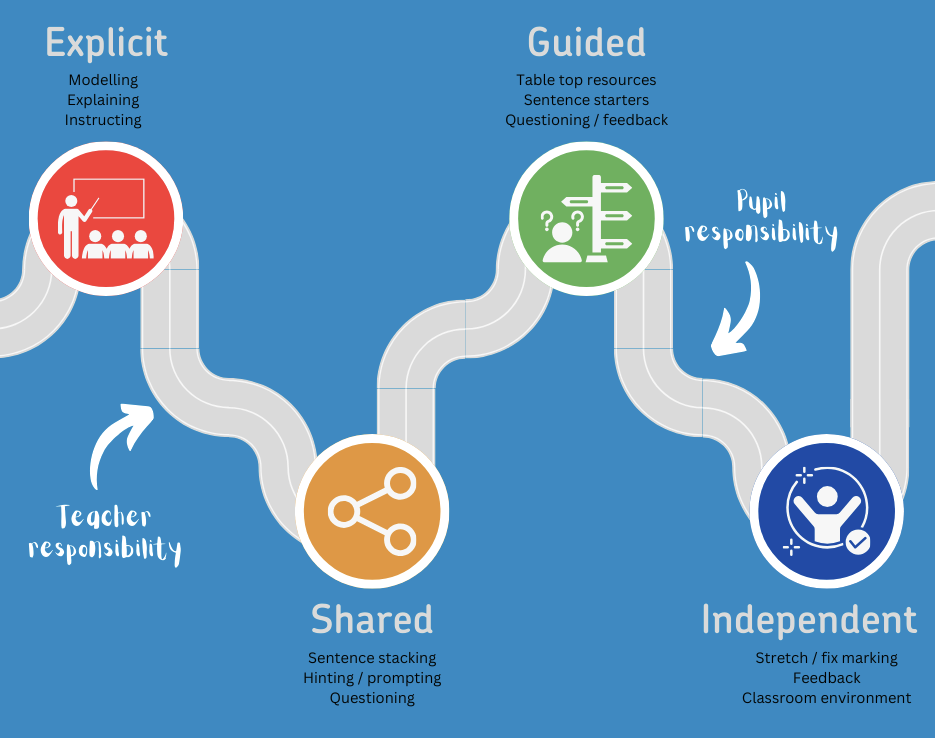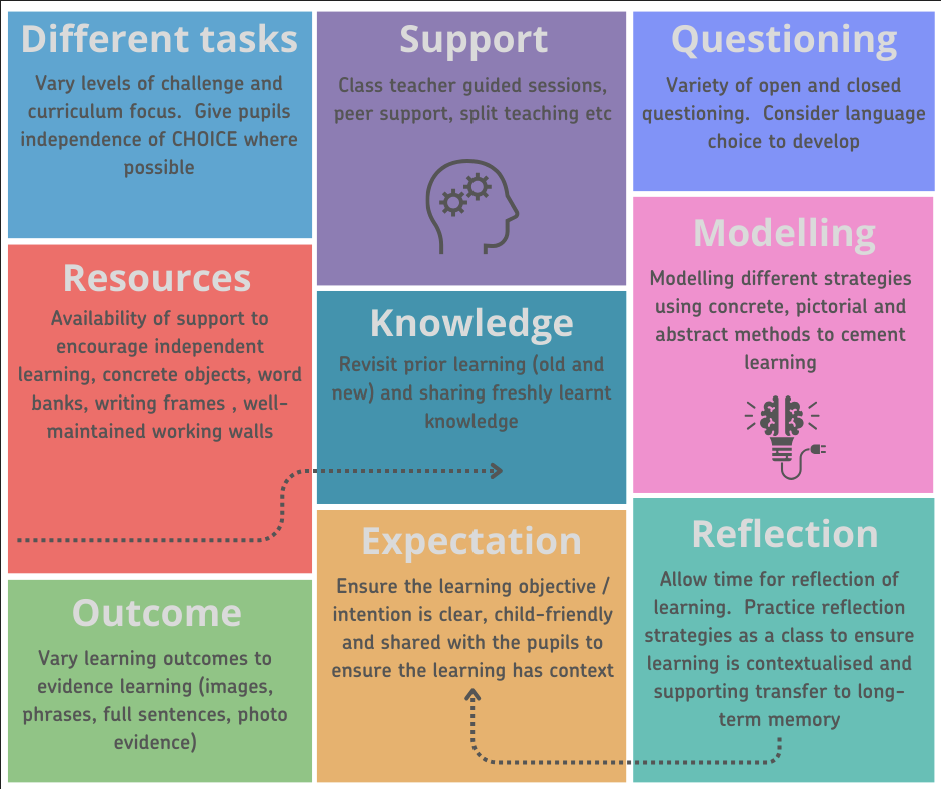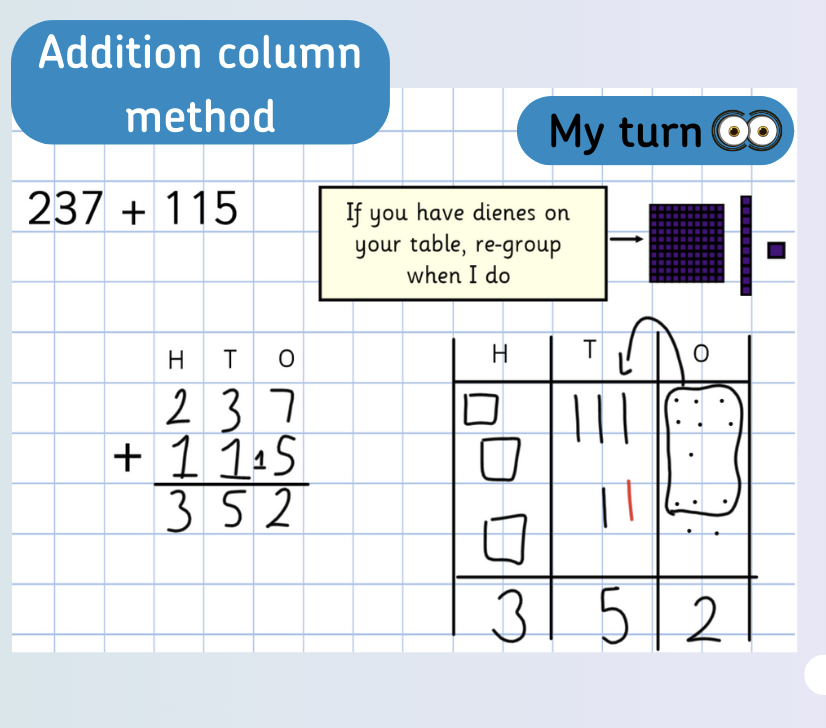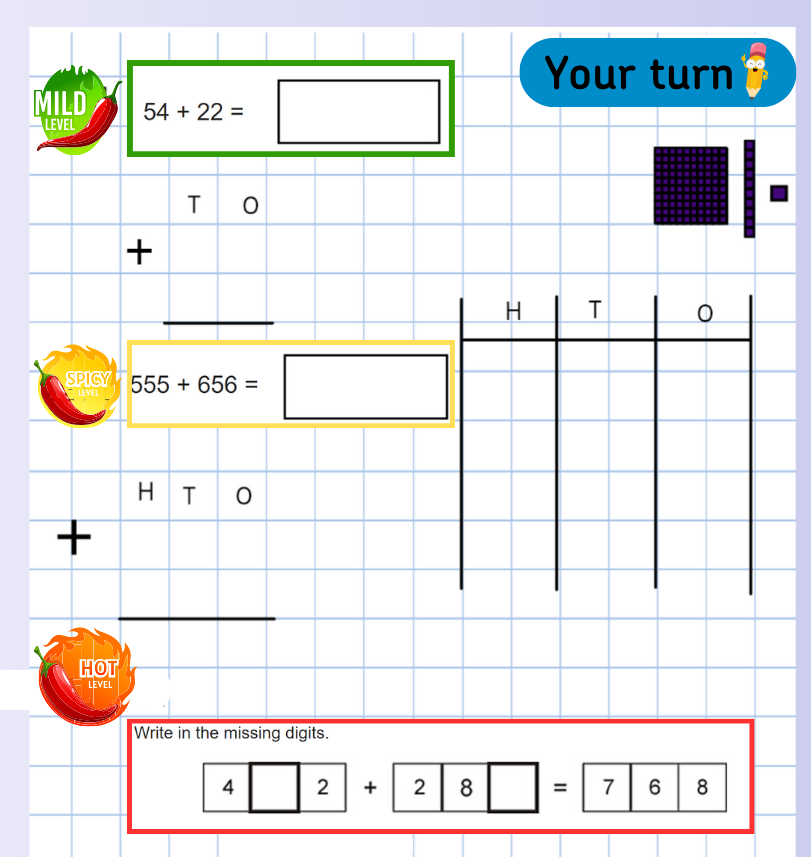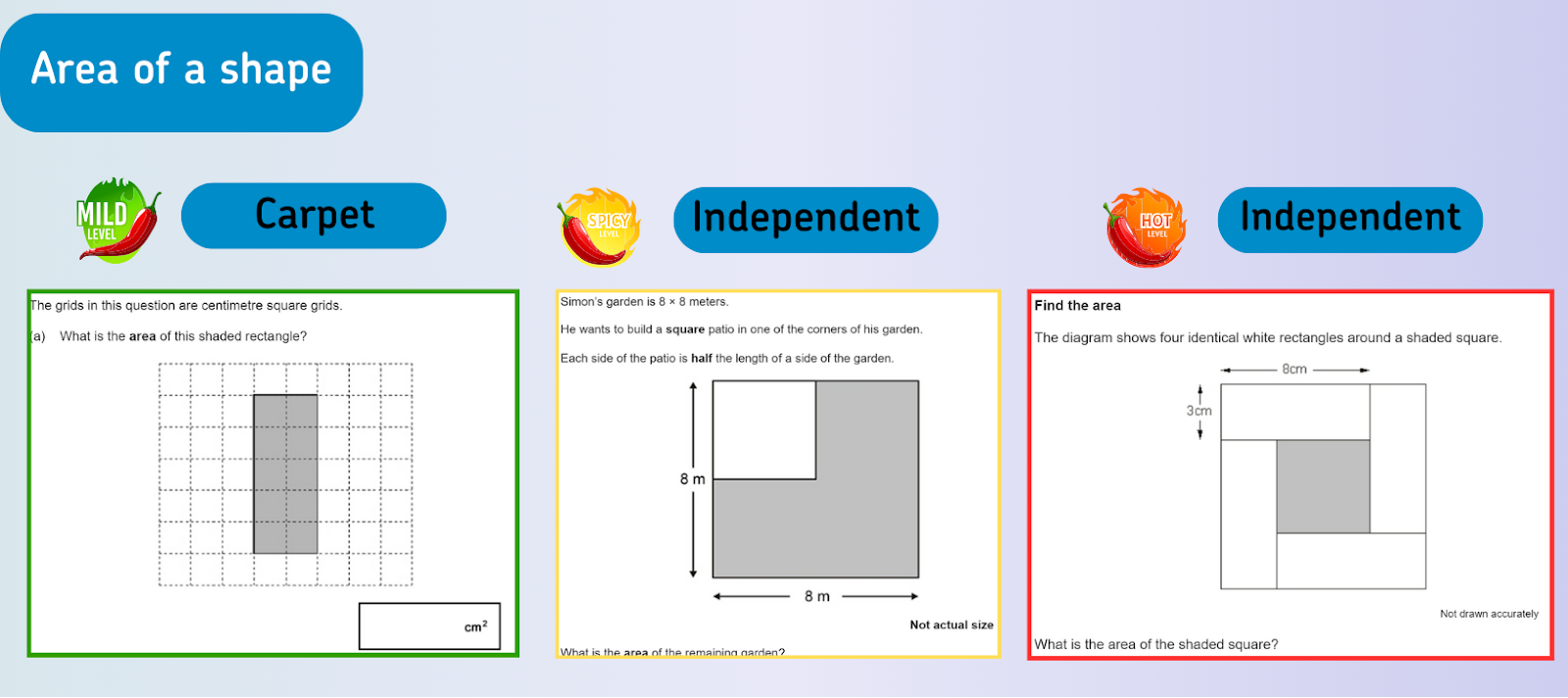“We’re all reaching for the top of the mountain but some of us will need more help, more guidance, more time.” (Sherrington, 1999)
Discussion around how and why adaptive learning should differentiate, scaffold, or both, in our lessons is often hotly debated. There is no ‘right’ answer, and each setting and lesson has different requirements. Differentiation and scaffolding strategies often overlap depending on the lesson content, the output and the prior learning of the pupils. They can and should be used in conjunction with each other. The DfE clearly lays out for us the expectation for ensuring success for every pupil:
- Plan lessons to ensure that there are no barriers to every pupil achieving
- Set high expectations for every pupil
- Stretch work for pupils whose attainment is above expected standard
- Plan lessons for pupils who have low levels of prior attainment / disadvantaged backgrounds
To get the best from our pupils, we should have an ethos within the classroom that creates a culture of learning without limits and promotes flexibility, independence, and challenge. Both approaches are critical for achieving this.
Differentiation vs Scaffolding
One definition of differentiation is the way in which the teacher changes the content, task, environment or expectations of teaching and learning. As Carol Ann Tomlinson (1999) explains, “Differentiation means providing students with many options for gaining knowledge. It ensures that learning and teaching works for every student. In order for it to work for every student, we must not approach differentiation with a single approach.” The Early Career Framework states, “adaptive teaching is less likely to be valuable if it causes the teacher to artificially create distinct tasks for different groups of people or to set lower expectations for particular pupils.”
Scaffolding is “the process of making it easier for pupils to reach their learning goals by splitting up big development goals or tasks into several, progressive stepping stones and providing support such as prompting questions or writing frames. (GTC Research of the Month Summary Behaviour for learning: Engaging with research.) It is the journey from teacher-led learning to pupil-led learning by gently adding and then removing levels of support, like the removal of stabilisers on a bike. This should be built into the curriculum and pedagogy of a school, but teachers should also be adapting individual lessons responsively.
What is scaffolding?
Adaptive learning for a personalised approach
The focus should be on an adapted learning experience, personalised for each child, rather than specifically on scaffolding OR differentiation. At the lesson design stage, include building blocks for ALL students, allowing pupils with a variety of prior learning to access the learning and grow in confidence. In the same breath, avoid making assumptions about a child and placing a ‘ceiling’ on the learning they will be able to access. Greater challenge should always be available and encouraged. Scaffolding makes every task accessible for every type of learner, whilst differentiation ensures there is a task suitable for learners irrelevant of prior learning, with the option to progress to the next step of the learning journey when ready to do so.
Differentiation and Scaffolding strategies
How these strategies translate in a classroom
Scenario 1: Self-selecting differentiating with scaffolding
Consider, a maths lesson introducing the concept of the formal column method for addition with regrouping:
- Concrete resources will be available with a variety of methods modelled during the teaching phase of the lesson. This will be evident in books when children are showing their working out.
- Recap prior knowledge of adding two numbers together (drawing, counting on, number lines, use of number bonds, mental maths)
- Strategies for the formal method are modelled first using visual and concrete support (pictures and dienes) with no regrouping (previous year curriculum) and then regrouping
- Formal method modelled again with visual and concrete support alongside written method
- Share ‘Challenge’ questions on each slide with missing numbers. Model how to answer at least one.
- Different tasks shared with class (column method no regrouping, column method with regrouping, column method with missing numbers)
- Children given the choice to start on the task they feel they are confident with and reminded of the flexibility to move onto a more challenge task without completing the original task if too easy
- Discussion opportunities with teacher throughout lesson on task choice
- Children self-reflect at end of lesson
Scenario 2: Split teaching
Consider a maths lesson with a learning intention of finding the area of shape.
- Support used to challenge the ‘most confident’. Knowledge and modelling used to ensure the majority can work independently.
- Recap prior knowledge and model method needed for multiplying
- Method modelled to class with questioning and AFL whiteboard work used to assess those confident with method
- Independent task shared with children
- Class teacher to use AFL carried out to choose confident children to stay on the carpet in order to model problem solving and reasoning questions based on area
- Once the initial challenge group is working independently, the rest of the children are given the choice to come and join the class teacher for some challenge questions. Class teacher to check each child’s answers before they join group to check for understanding
References
- Sherrington, T (2019) Rescuing Differentiation from the Checklist of Bad Practice. – teacherhead
- Tomlinson, C. A. (1999). The Differentiated Classroom Responding to the Needs of All Learners
Follow our social media channels for more education news, CPD and support on getting the most from your Testbase subscription:


